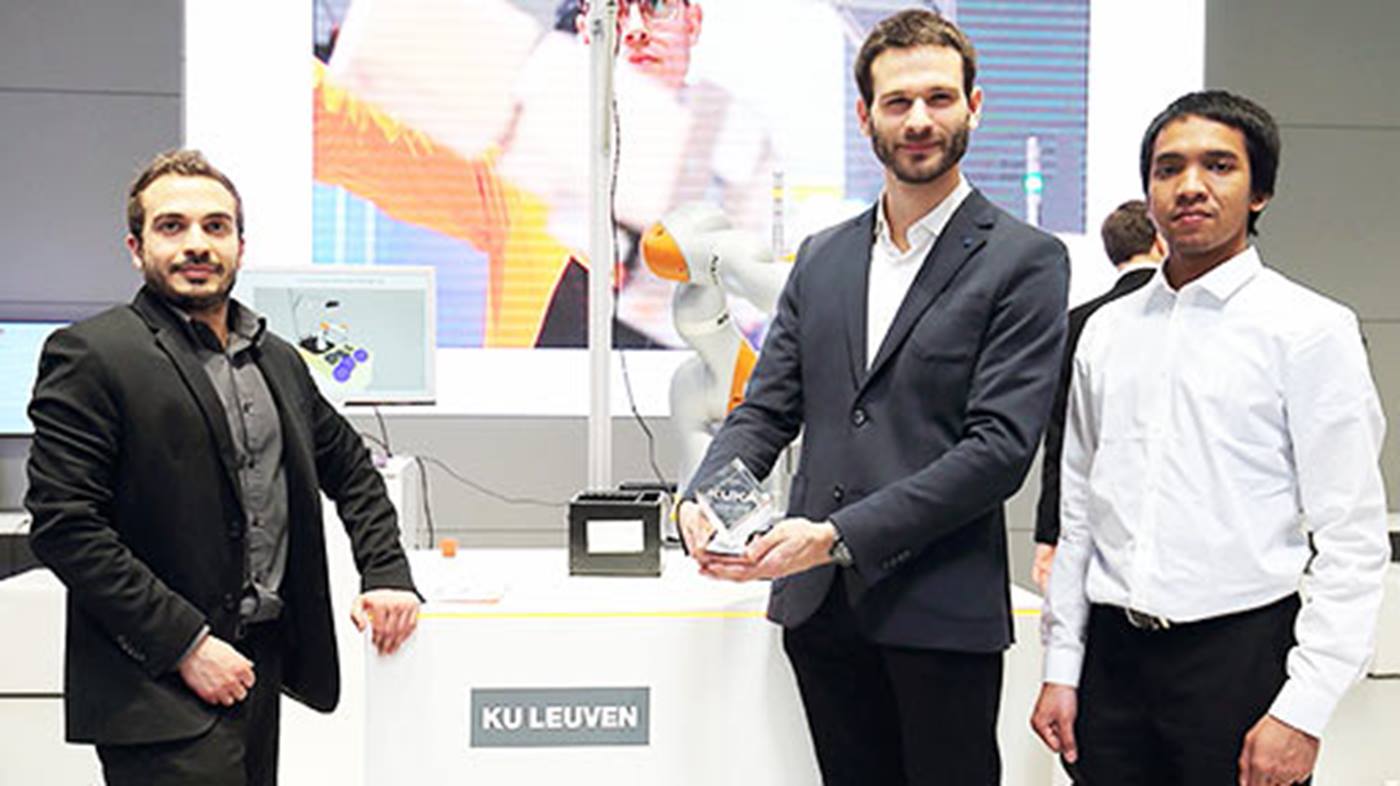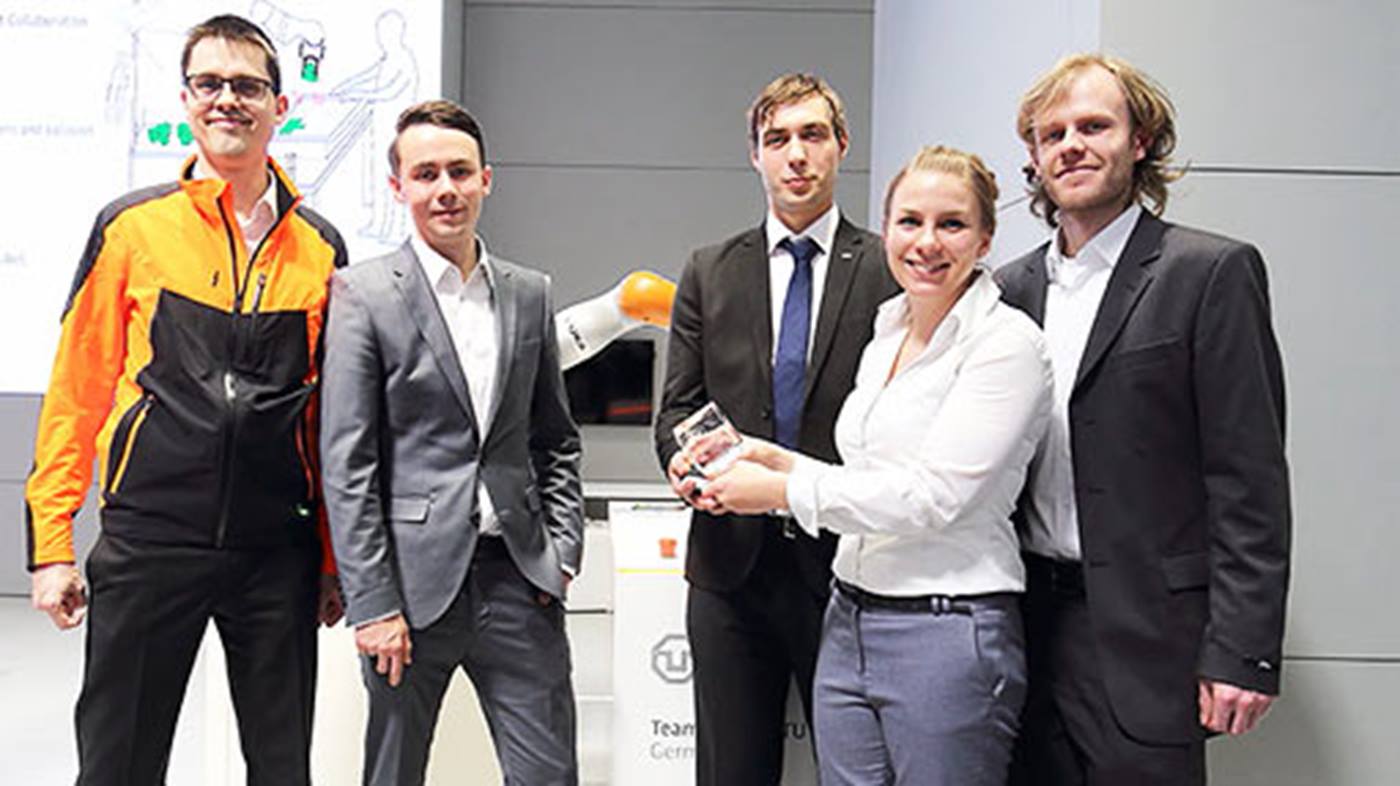Innovation Award 2016: the challenge
The objective of the 2016 KUKA Innovation Award is for the contestants to present innovative robotic applications and components related to the topic of flexible manufacturing. In a realistic setting, solutions are to be found for everyday problems facing end users. New key technologies and components are developed and demonstrated for this purpose. A total of 25 applications were received from around the world for the KUKA Innovation Award. An international jury of experts selected six finalists.
The finalists had six months to implement their exciting applications with the KUKA robot hardware. The final of the KUKA Innovation Award was held at Hannover Messe 2016 in the presence of thousands of experts. The winning team will receive the not inconsiderable sum of 20,000 euro.







